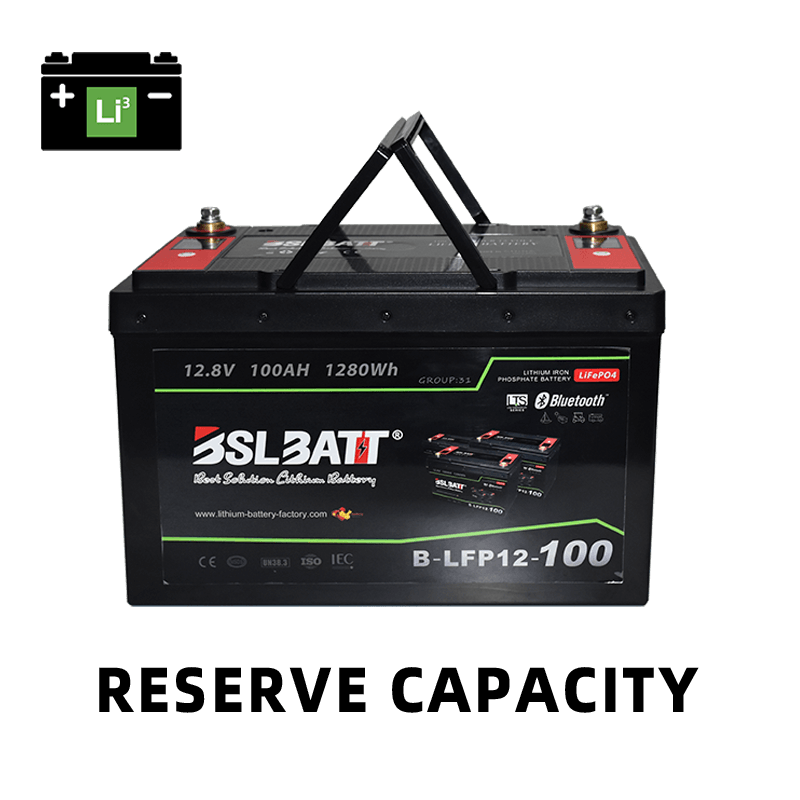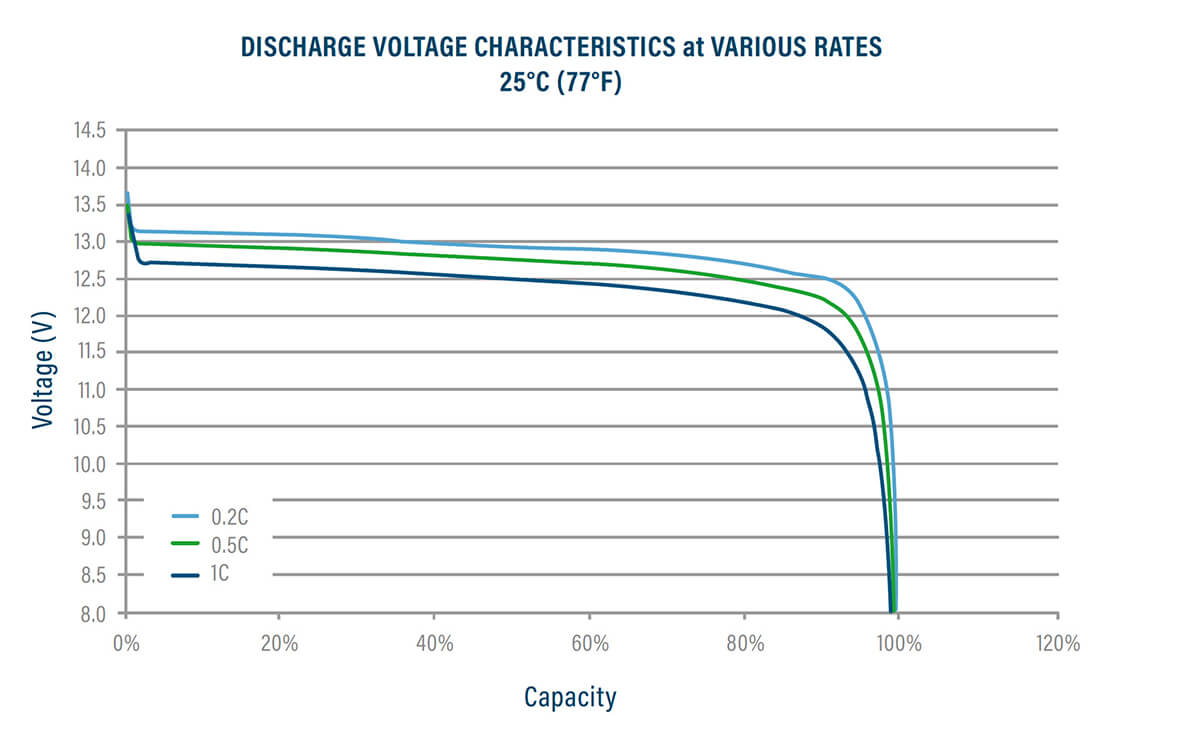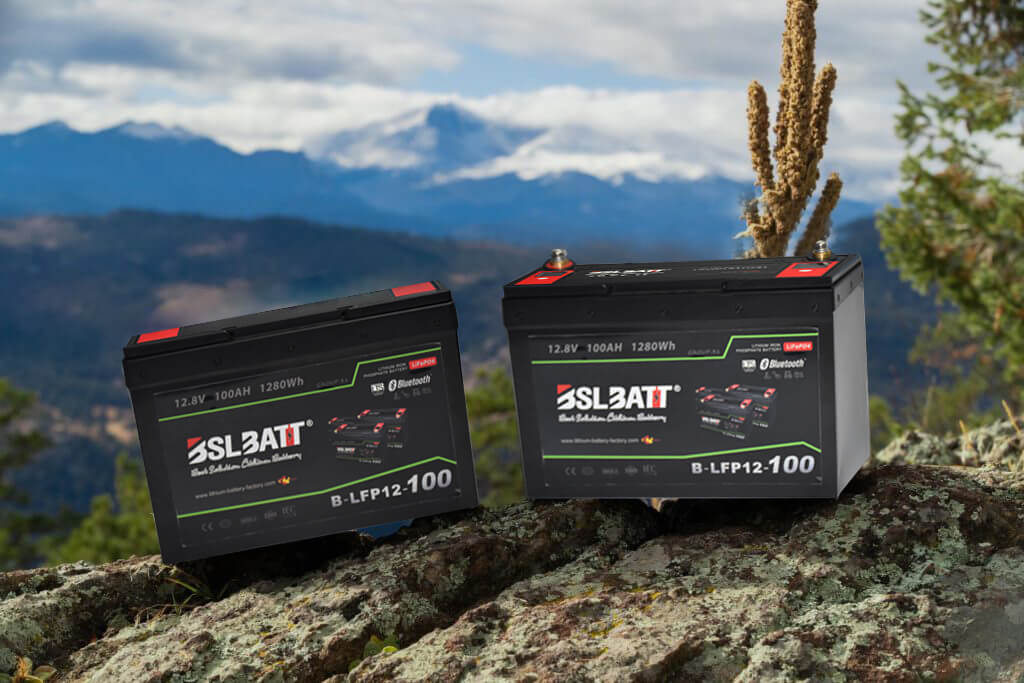Industry Application
Product Type
Battery Reserve Capacity Explained: Time of Sustained Constant Loads
Deciding on which battery to invest in for your energy system can be daunting. There are countless specifications to compare – from amp hours to voltage to cycle life to efficiency. Another specification, battery reserve capacity, is important to understand, as it can greatly impact the battery’s lifespan as well as determine how the battery will perform under sustained loads. With all the different styles, sizes, and brands, it can be easy to throw up your hands and buy the one suggested by someone else. But understanding the specifications of batteries can go a long way toward helping find the correct battery. One specification you may have seen is battery reserve capacity. Below we’ve compiled key information you should know about reserve capacity before investing in your next battery.
What is battery reserve capacity?
It’s important to answer the question of what the reserve capacity on a battery is so you can start using it to your advantage.
Reserve capacity is the amount of time measured in minutes a fully-charged battery can be discharged at 25 degrees Celcius at 25 amps before the voltage drops to 10.5 volts.
A reserve capacity rating tells you the reserve capacity of a battery. The higher it is, the longer it can sustain voltage.
An example measure for reserve capacity would be RC @ 25A = 160 minutes. This means that at 25 degrees Celcius, the battery can supply 25 amps for 160 minutes before the voltage drops.
Need a refresher before we dive in? For more important definitions, check out our glossary of battery terms.

Why is battery reserve capacity important?
Reserve capacity is used to understand how long you can run your batteries with consistent loads. It becomes very important to understand if you intend to discharge your batteries for a longer period of time and it is a great indicator of battery performance. If you know your reserve capacity, you will have a better understanding of how long you can use your batteries, and how much power you will be able to leverage. Whether you have a reserve capacity of 150 minutes or 240 minutes is a big difference and can drastically change how you use your batteries as well as how many you may need. If you’re spending a full day on the water fishing, for example, you should know how much power and time you’ll have with your battery so that you can time your travel effectively and get home without running out of juice.
Reserve capacity directly impacts the power you are able to generate with your battery. Since power is equivalent to amps multiplied by volts if your battery voltage drops from 12V to 10.5V, the power drops. Also, since energy is equivalent to power times the length of time used, if the power drops, so does the energy produced. Depending on how you intend to use your battery – such as for days-long RV trips, or for an occasionally used golf cart, you will have different reserve capacity needs.

How does reserve capacity differ between lithium & lead acid batteries?
First, while lithium batteries do have reserve capacities, they are not usually rated or referred to this way, as amp-hours or watt-hours are the more common ways lithium batteries are rated. That being said, lead acid batteries have a lower reserve capacity on average than lithium batteries. This is because lead acid batteries exhibit the Peukert Effect in which their reserve capacity decreases as the rate of discharge decreases. The Peukert Effect does not apply to high-quality lithium batteries, and the amp-hour rating of these lithium batteries is the actual amount of charge you can receive from the battery under the majority of conditions.
Is Reserve Capacity the Same as Amp Hours?
No, these are separate measurements that reflect different things. For one, reserve capacity is a simple measure of time, while amp-hours measures the number of amps a battery can provide over an hour-long period.
However, these two measurements are related, and you can convert one to the other. Divide the RC by 60, and then multiply this number by 25 to obtain the amp hours. If you have the amp hours, divide this number by 25, and then multiply that number by 60 to find the battery reserve capacity.
Keep in mind that this doesn’t quite mean equal energy, as the measurements and conversions don’t take voltage into account.
Do Lithium Batteries Have Reserve Capacities?
Yes, lithium-ion batteries have reserve capacities, but they’re not typically rated or referred to that way. With lithium batteries, amp hours or watt-hours are the standards of comparison.

lithium-ion batteries have reserve capacities
Lead-acid batteries will see a lower reserve capacity due to the 25-amp draw and the Peukert Effect. The Peukert Effect shows how traditional lead-acid batteries see decreased capacity as the rate of discharge increases. High-quality lithium like our BSLBATT line does not suffer significantly from the Peukert effect and the amp hour rating of the battery is the actual amount of charge you can get from the battery under most conditions.
Specifically, the average reserve capacity of a 12V 100Ah lead-acid battery is around 170-190 number of minutes, whereas the average reserve capacity of a 12V 100Ah lithium battery is about 240 number of minutes. Lithium batteries offer higher reserve capacity at the same Ah rating, so you can cut down on space and weight by installing lithium batteries instead of lead acid. Our B-LFP12-100 has a reserve capacity of 240 minutes at 25 amps, offering higher capacity and longer-lasting power at a fraction of the weight. The B-LFP12-100 is also just 30 pounds, compared to a 12V 100Ah lead acid battery that weighs 63 pounds.
Want To Learn More About Electrical Systems and Lithium Batteries?
If you need help determining the optimal battery for your specific use case – from boating to your next RV trip, our experts are available to walk you through the process. Contact a member of our team today to get started.
Also, join us on Facebook, Instagram, and YouTube to learn more about how lithium battery systems can power your lifestyle, see how others have built their systems, and gain the confidence to get out there and stay out there.
A Guide to Choosing the Best 48V Lithium Golf Cart Battery
Would it be worth investing in a 48V ...
10 Exciting Ways To Use Your 12V Lithium Batteries
Back in 2016 when BSLBATT first began designing what would become the first drop-in replacemen...
BSLBATT Battery Company Receives Bulk Orders from North American Customers
BSLBATT®, a China Forklift battery manufacturer specializing in the material handling indust...
Fun Find Friday: BSLBATT Battery is coming to another great LogiMAT 2022
MEET US! VETTER’S EXHIBITION YEAR 2022! LogiMAT in Stuttgart: SMART – SUSTAINABLE – SAF...
Looking for new Distributors and Dealers for BSL Lithium Batteries
BSLBATT battery is a fast-paced, high-growth (200% YoY ) hi-tech company that is leading the a...
BSLBATT to Participate at MODEX 2022 on March 28-31 in Atlanta, GA
BSLBATT is one of the largest developers, manufacturers, and integrators of lithium-ion batter...
What makes the BSLBATT the Superior Lithium Battery for your Motive Power needs?
Electric forklift and Floor Cleaning Machines owners who seek the ultimate performance will fi...





























